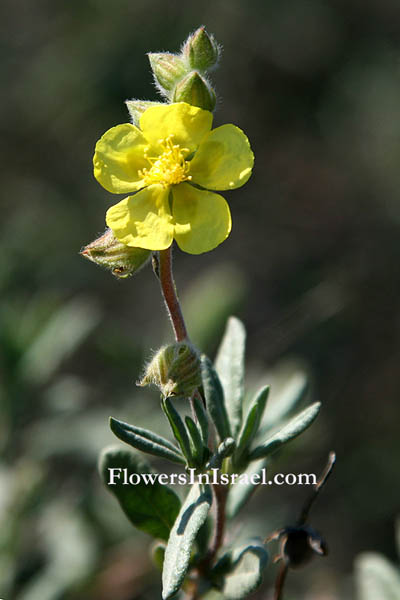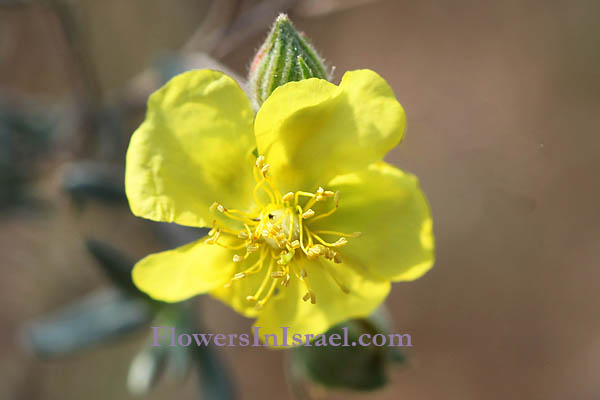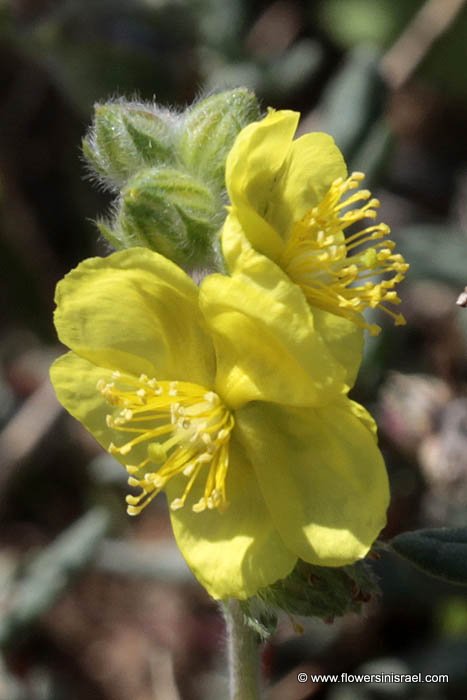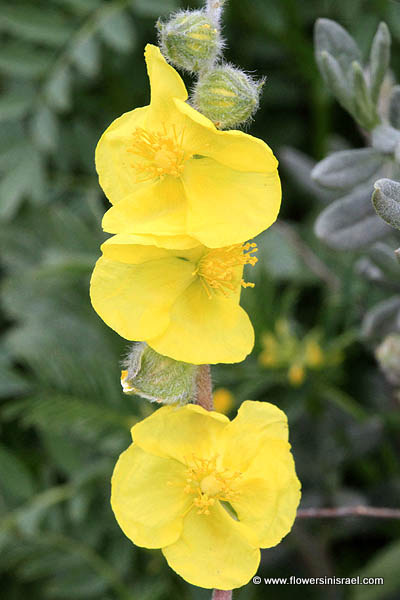Hebrew: שמשון סגלגל, Arabic: هشمة
| Scientific name: | Helianthemum stipulatum (Forsk.) C.Chr. | |
| Synonym name: | Helianthemum ellipticum (Desf.)Pers. | |
| Common name: | Sun-Rose | |
| Hebrew name: | שמשון סגלגל | |
| Arabic name: | هشمة | |
| Family: | Cistaceae, לוטמיים |

|
| Life form: | Shrub | |
| Stems: | Stellate-tomentose | |
| Leaves: | Linear to elliptic or ovate, acute or apiculate, with ± revolute margins, tomentose above, more densely so beneath | |
| Flowers: | Yellow | |
| Fruits / pods: | Capsule 4–5 mm long. Seeds 1–1.2 mm long | |
| Flowering Period: | March, April, May, June, July, August | |
| Habitat: | Sand | |
| Distribution: | Mediterranean Woodlands and Shrublands, Semi-steppe shrublands, Shrub-steppes, Deserts and extreme deserts | |
| Chorotype: | Saharo-Arabian | |
| Summer shedding: | Perennating |

Derivation of the botanical name: Helianthemum , Greek, helios, sun; anthemon, flower, because the flowers open only in the sun. stipulatum, provided with stipules. ellipticum, elleipsis, ελλειψιϛ, deficiency, defect; elliptic. The Hebrew name: שמשון, shimshon, formed from שמש (=sun), with suffix -on; compare the scientific name Modern L. Helianthemum, which is compounded of Greek helios (= sun) and anthos ( ־ flower), compare Biblical Hebrew proper name שמשון (= Samson).



|